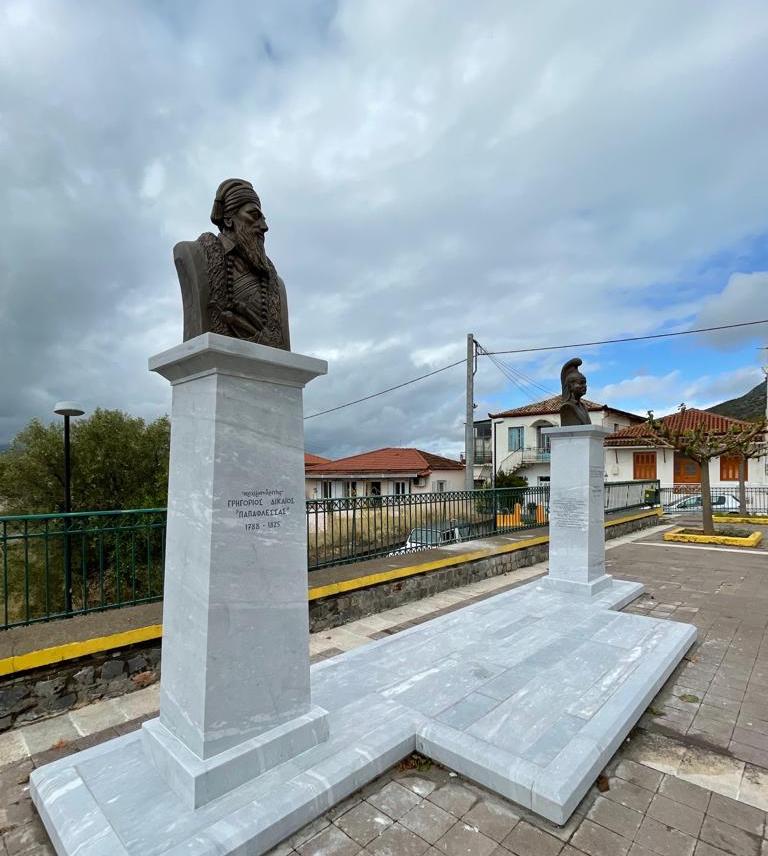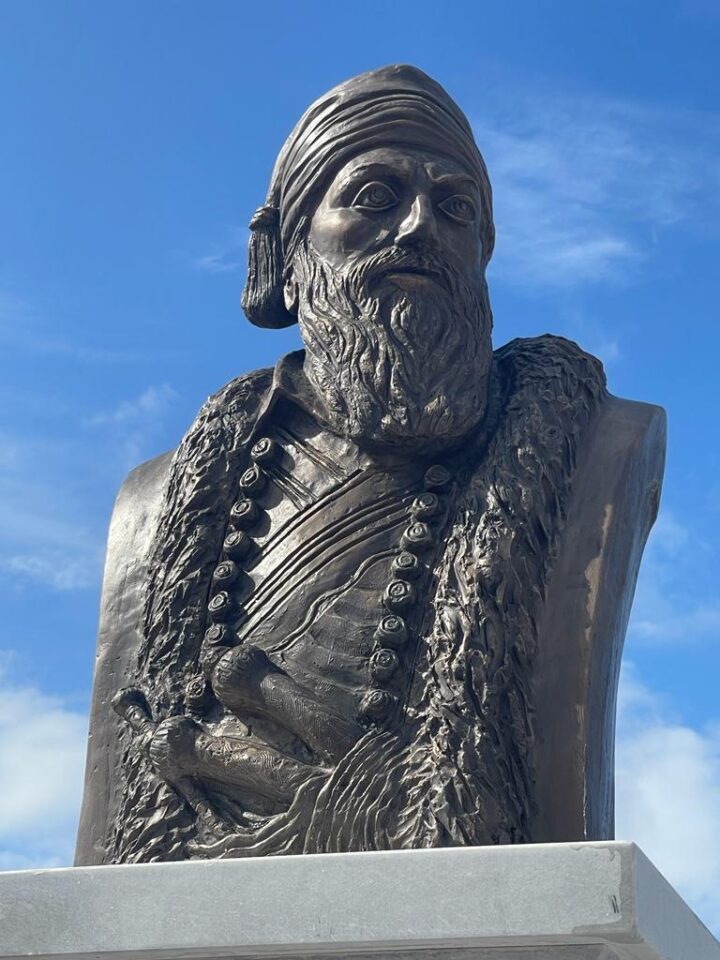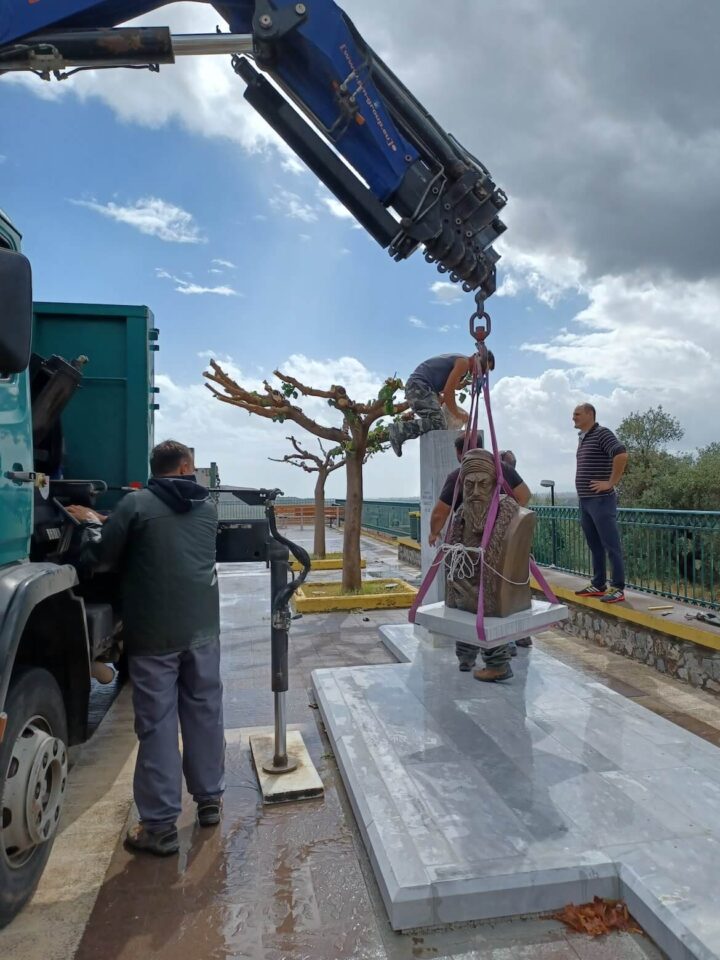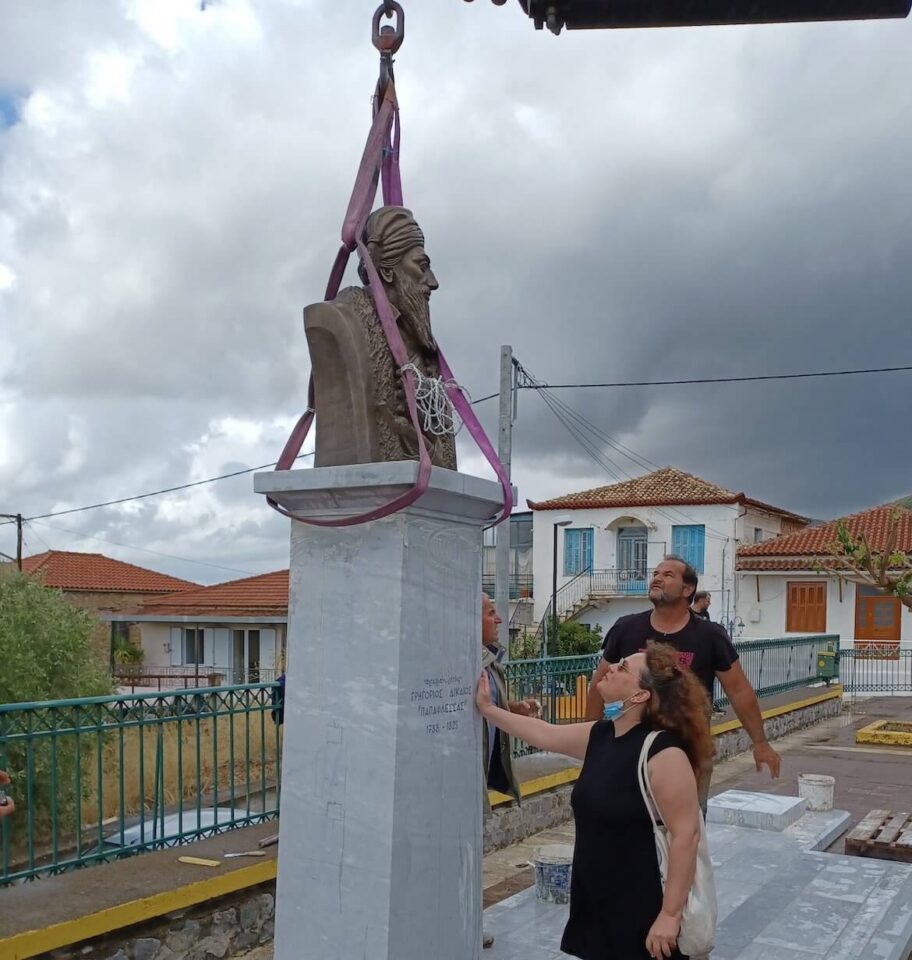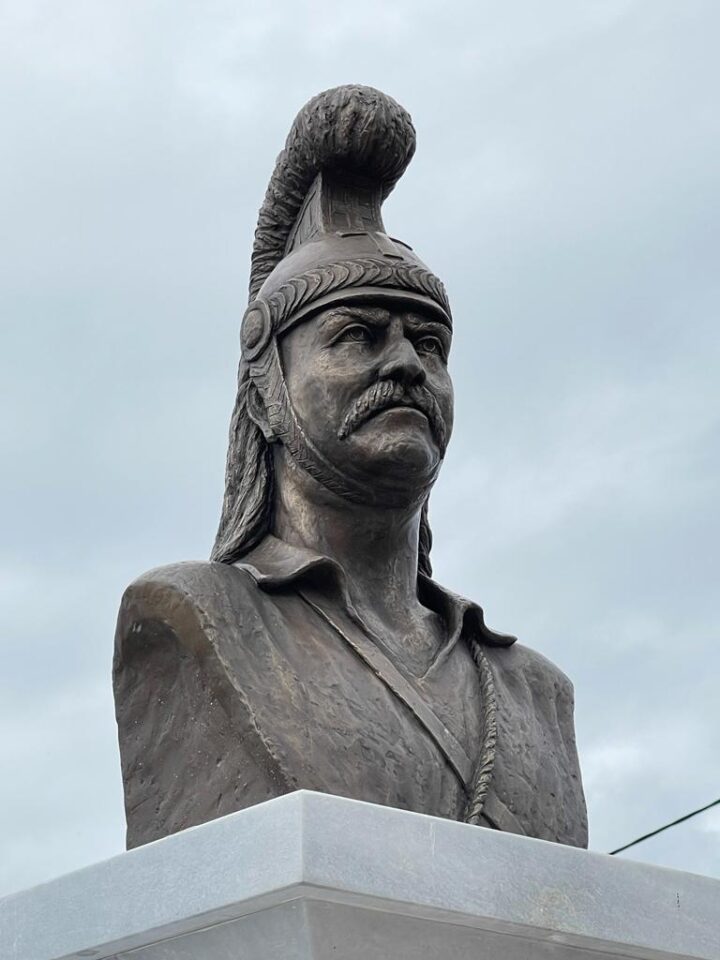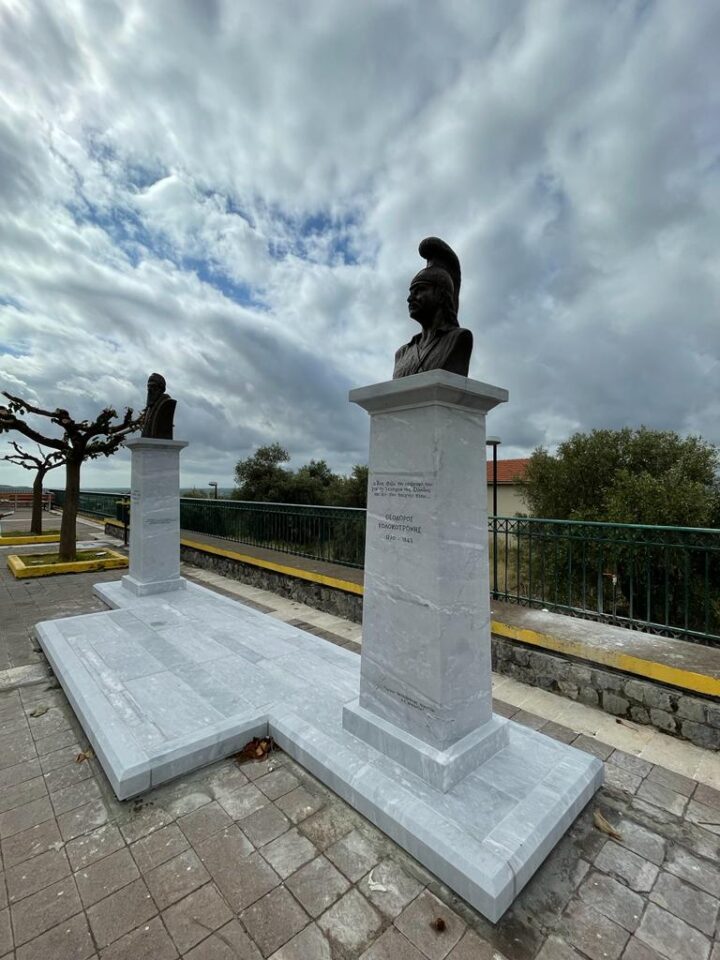John Georges, a businessman from New Orleans, Louisiana, commissioned and paid for the creation of a revolutionary hero’s statue in his ancestral Greek village this past summer.
The statue of Georgios Dikeos, commonly known as “Papaflessas,” was erected next to a statue of fellow hero Theodoros Kolokotronis in the Peloponnesian village of Arfara. Dikeos was a clergyman, freedom fighter and creator of the first Greek flag.
Georges, whose original family name was “Georgountzos,” said he undertook the initiative to celebrate this year’s 200th anniversary of the Greek Revolution against the Ottoman Turkish empire.
“Building more monuments and statues in the Peloponnesos to honor these heroes is what the bicentennial is all about,” Georges told The Pappas Post.
Georges is a businessman and philanthropist and part-owner of Galatoire’s Restaurant, a century-old institution in New Orleans which has received numerous fine dining awards.
The bust portrait of Dikeos was designed by Maria Demetra (DIDI) Mourdjinis, an artist and sculptor who has won numerous international awards. Most recently, Mourdjinis’ sculptural works were featured among the Greek artistic team for the Summer 2020 Tokyo Olympic Games. Her works can be found in private and public collections in Greece and abroad.
Dikeos, whose name means “righteous” in Greek, lived from 1788 to 1825. His surname was a clerical, monastic title referring to the caretaker or administrator of a monastery, abbey or hermitage. “Papaflessas,” his nickname, is a merge of his vocation (priest or clergyman) and his family name.
In 1816, Papaflessas was consecrated, given the name “Gregory” and admitted at the monastery of Panagia Velanidia in Kalamata. But after developing tensions with the bishop of Monemvasia, he left the monastery and went to Constantinople where he was ordained “Archimandrite” by Patriarch Gregory the 5th.
In 1820, Dikeos returned to the Peloponnese with an armed ship and organized the Assembly of Vostisa (the former name of the modern day village of Aigio) where he presented the orders of nationalist politician Alexandros Ypsilantis to begin the Greek Revolution. He faced reservation, hesitation and open hostility from his countrymen but persisted in the mission to liberate his people.
The Battle of Tripoli in 1821 ended with a Greek victory whereafter freedom fighters hoisted the first official Greek flag — a white cross over a blue background — in the city hall.
Tradition says that Dikeos created the flag by tearing his blue inner clergy garment and forming a square. He formed the white cross by using two strips of cloth from the “foustanela,” or fighting garment, of fellow fighter Panagiotis Kefalas.
On May 20, 1825, Dikeos became first to demand that the Ottomans release imprisoned Greek warriors. His request went unheeded and the Battle of Maniaki followed.
Before the battle, Dikeos had gathered approximately 2,000 fighters. But more than half of his men dispersed at the last minute, leaving him with a force of 600 — including himself — who were killed after valiant resistance.
In recognition of the clergyman’s bravery and heroism, his Ottoman opponent Ibrahim Pasha exclaimed “It is a sin for such fighters to be lost!”
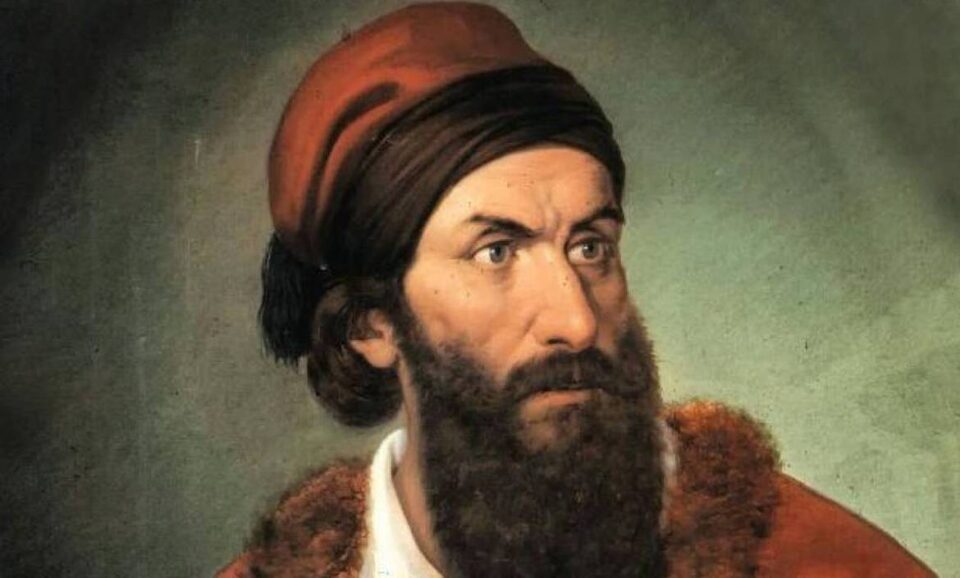
The statue of Kolokotronis, next to that of Papaflessas, was funded by a group of local citizens from the municipality of Arfara.
Featured image courtesy of Alexa Armatis
Is The Pappas Post worth $5 a month for all of the content you read? On any given month, we publish dozens of articles that educate, inform, entertain, inspire and enrich thousands who read The Pappas Post. I’m asking those who frequent the site to chip in and help keep the quality of our content high — and free. Click here and start your monthly or annual support today. If you choose to pay (a) $5/month or more or (b) $50/year or more then you will be able to browse our site completely ad-free!

Click here if you would like to subscribe to The Pappas Post Weekly News Update

